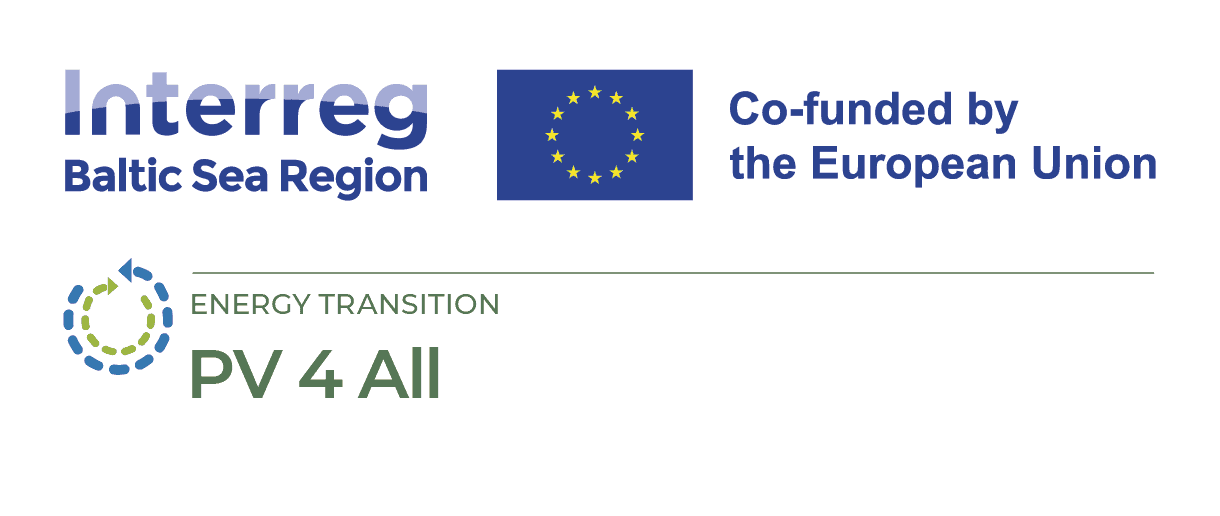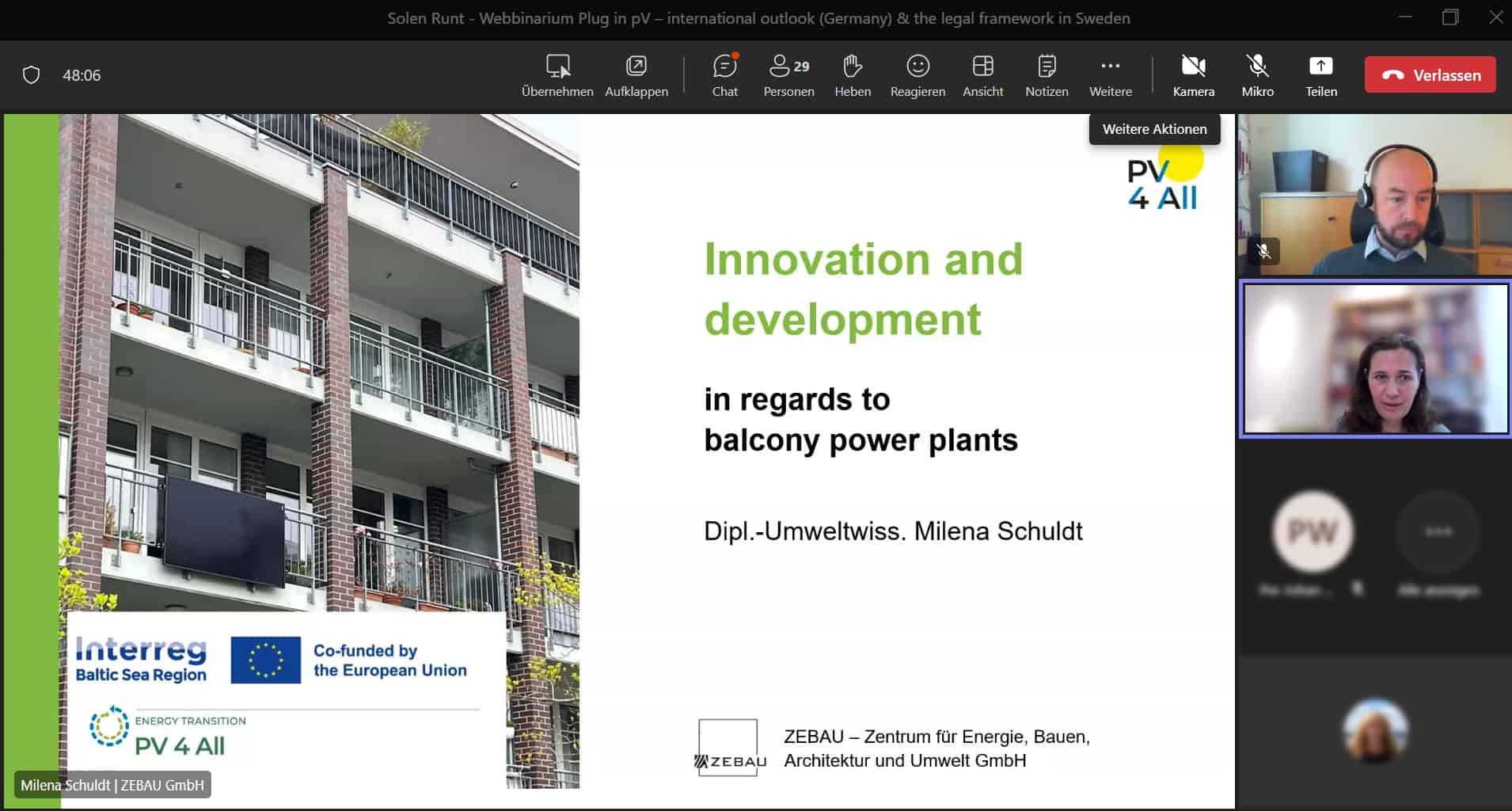
PV4All-Webinar on international outlook and legal framework in Sweden for plug-in PV
13 October 2023
First to present was ZEBAU, who presented the situation in Germany where plug-in PVs are allowed. Milena Schuldt gave a lecture about current regulations for plug-in PVs in Germany and the possibilities for a large scale implementation of these solar panels. In Germany it is possible to use a PV power plant with power up to 8oo W, using a Schuko plug for a direct connection to the electricity the grid in the building. Soon it will be possible to have an installed capacity of 2 kW and inverter capacity of 800 volt-amperes. The market for plug-in PVs are growing and there is a lot of interest from the public for these balcony power plants as they are referred to in Germany.
Mikael Carlson from the National Electrical Safety Board of Sweden wanted to make clear in his presentation that the authority has nothing against PV panels but the Swedish law and regulations does not allow plug-in PV panels. This has mainly to do with the fact that the Schuko connecting plug is not allowed in the regulation to be used for electricity production. It is allowed to connect for using electricity from the grid. To have the Schuko plug allowed for electricity production or to state that another type of a connecting plug is needed for electricity production from a plug-in PV plant, a change in the regulations is needed. At the moment, there are no initiatives to start the work on a change of the regulations. Nothing says it cannot start. Apart from the connection plug, the authority sees a few other obstacles for plug-in PVs such as possibilities to exceed the limit of 800 W by connecting several panels in series to the same wall socket where the risk of overloading the cable from the socket with risk of fire. Further, there are risks of electrical schocks for electricians working in the grid where plug-in PVs are connected and the panel itself must be CE-branded and electrically safe to use.
There is a possibility to start the work with revision of the regulation to be able to allow wall socket plugs to be used for electricity production facilities such as plug-in PVs in Sweden but no such initiatives are ongoing. There are other aspects to work with that probably could be dealt with but implementation of plug-in PVs are likely to take time to be realised in Sweden and no time line for that to happen can be established at the moment.







